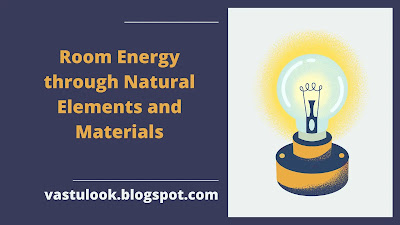Harnessing Harmony:
The Influence of Feng Shui on Room Energy through Natural Elements and Materials
 |
Feng Shui on Room Energy through Natural Elements and Materials |
1. Introduction:
The ancient practice of Feng Shui, originating from China, has garnered widespread attention for its ability to create harmonious and balanced environments. At its core, Feng Shui focuses on the flow of energy, or "chi," within a space. One of the key components influencing this energy is the use of natural elements and materials. In this extensive exploration, we delve into the profound impact of Feng Shui on room energy and how the careful selection of materials aligns with the five elements, fostering an atmosphere of balance and positivity.
2. Understanding Feng Shui:
2.1 Principles of Feng Shui:
Feng Shui, translated as "wind-water," is an ancient Chinese art and science that seeks to harmonize individuals with their surroundings. Its principles are rooted in the idea that the arrangement of objects and elements within a space can influence the flow of energy, impacting the well-being and success of those inhabiting the space. The practice involves balancing the opposing forces of yin and yang, harnessing the five elements, and ensuring the smooth circulation of chi.
2.2 The Five Elements:
Central to Feng Shui are the five elements—Wood, Fire, Earth, Metal, and Water. Each element represents distinct energies and qualities that, when incorporated thoughtfully, contribute to a balanced and harmonious environment. Understanding the characteristics of these elements is crucial for creating a space that resonates with positive energy.
 |
3.1 Wood:
Wood represents growth, vitality, and flexibility. Incorporating wooden elements in a room can promote creativity, inspiration, and a sense of well-being. Wooden furniture, flooring, or decorative items contribute to the nurturing energy associated with the Wood element.
3.2 Fire:
Fire embodies passion, transformation, and warmth. Introducing the Fire element through colors like red, candles, or lighting enhances the vibrancy and energy of a space. However, it's essential to balance Fire elements to prevent overwhelming or aggressive energies.
3.3 Earth:
Earth symbolizes stability, grounding, and nourishment. Elements like earthen tones, ceramic, or stone surfaces foster a sense of security and connection to the natural world. Properly integrating Earth elements can enhance stability and balance within a room.
3.4 Metal:
Metal represents precision, clarity, and efficiency. Incorporating metallic elements, such as stainless steel or metal decor, promotes organization and sharpness. However, too much Metal can create a cold and sterile atmosphere, emphasizing the need for balance.
3.5 Water:
Water embodies fluidity, relaxation, and abundance. Incorporating water features, mirrors, or the color blue can introduce the calming and rejuvenating essence of the Water element. Care must be taken to avoid excessive Water elements, which can lead to instability or a lack of focus.
4. Choosing Materials in Feng Shui:
4.1 Wood:
When selecting wooden materials in Feng Shui, consider options like bamboo, teak, or oak. These materials not only align with the Wood element but also bring warmth and natural beauty to a space. Wooden furniture, flooring, and decor contribute to a sense of vitality and growth.
4.2 Fire:
Materials associated with the Fire element include bold colors like red and orange, as well as materials like leather and synthetic fabrics. Integrate these materials thoughtfully to evoke the passionate and transformative qualities of Fire without overwhelming the space.
4.3 Earth:
Earthy materials like stone, ceramic, and clay align with the Earth element in Feng Shui. Incorporating these materials into flooring, countertops, or decor items can provide a stable foundation and a sense of grounding in a room.
4.4 Metal:
Metal materials, such as stainless steel, chrome, or metallic accents, represent the Metal element. These materials can be incorporated into furniture, fixtures, or decor to bring clarity, efficiency, and a modern aesthetic to the space.
4.5 Water:
Materials associated with the Water element include glass, mirrors, and reflective surfaces. Incorporating these materials can create a sense of flow and abundance within a room. Water features, such as fountains or aquariums, also align with this element.
YOU MAY LIKE THIS:
5. Room-Specific Feng Shui Applications:
5.1 Bedroom:
In the bedroom, a balance of Wood and Earth elements promotes relaxation and stability. Wooden furniture and earthy colors contribute to a serene atmosphere, while avoiding excessive Fire or Metal elements ensures a harmonious space for rest.
5.2 Living Room:
The living room benefits from a blend of all five elements. Wood and Fire elements can enhance social interactions, Earth provides stability, Metal ensures clarity, and Water contributes to a relaxed ambiance. Thoughtful placement and balance are key for a welcoming living space.
5.3 Kitchen:
In the kitchen, Fire and Wood elements are particularly beneficial. Incorporating wooden surfaces, vibrant colors, and adequate lighting fosters a lively and nourishing environment. Balancing these elements with Earthy tones prevents excessive heat or overstimulation.
5.4 Bathroom:
Water and Metal elements are well-suited for the bathroom. Blues and reflective surfaces create a spa-like atmosphere, aligning with the calming nature of Water. Metal fixtures and accessories enhance the sense of clarity and cleanliness in this space.
5.5 Office:
In a home office, Metal and Wood elements are key for productivity. Incorporating metallic finishes, organized desk spaces, and wooden furniture promotes efficiency and focus. Balancing with Earth elements ensures a grounded and stable work environment.
6. Balancing Yin and Yang Energies:
In Feng Shui, achieving balance between yin and yang energies is crucial for harmonizing a space. Yin, representing receptivity and tranquility, should be balanced with yang, symbolizing activity and brightness. Natural elements and materials play a pivotal role in striking this balance. For instance, soft fabrics and rounded shapes contribute to yin energy, while angular and bold elements enhance yang energy. A harmonious blend of yin and yang creates a dynamic yet peaceful environment within a room.
7. Case Studies:
Explore real-life case studies where the principles of Feng Shui, coupled with the strategic use of natural elements and materials, have transformed spaces. These studies will showcase how thoughtful application of Feng Shui principles can influence the energy, mood, and functionality of different rooms.
 |
| AMAZON |
8. Practical Tips for Implementing Feng Shui:
Provide actionable and practical tips for individuals looking to incorporate Feng Shui into their living spaces. From choosing the right materials to arranging furniture and decor, these tips will guide readers on a journey to create balanced and harmonious environments within their homes.
9. Common Myths and Misconceptions:
Dispel common myths and misconceptions surrounding Feng Shui. Addressing misconceptions about the complexity of Feng Shui and clarifying its principles can empower individuals to embrace this ancient practice with confidence.
10. Feng Shui in Contemporary Design:
Examine how Feng Shui has seamlessly integrated into contemporary interior design. Explore modern spaces that incorporate the principles of Feng Shui while embracing current design trends. This section will highlight the timeless relevance of Feng Shui in shaping harmonious and aesthetically pleasing environments.
YOU MAY LIKE THIS:
11. Conclusion:
In conclusion, the influence of Feng Shui on room energy through natural elements and materials is a multifaceted journey towards balance and harmony. By understanding the principles of Feng Shui and the significance of the five elements, individuals can transform their living spaces into sanctuaries of positive energy. The careful selection of materials aligned with each element brings an intentional and purposeful dimension to interior design, fostering a sense of well-being and connection to the natural world. As we navigate the realms of Wood, Fire, Earth, Metal, and Water, we unlock the potential to create spaces that not only captivate the eye but also nourish the soul.
IMAGE SOURCE: yahoo.com
 |
Feng shui |
ARTICLE RELATED
feng shui elements, feng shui elements and colors, natural materials, remove all bad energy from your house and yourself, sadhguru home negative energy, feng shui five elements, remove negative energy from home, negative energy cleansing frequency, cleanse all bad energy, positive energy, remove negative energy, home positive energy, feng shui elements personality, remove bad energy, sadhguru on home, feng shui elements directions, energy.









